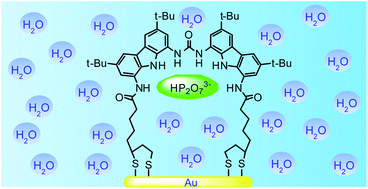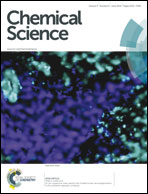Highly sensitive and selective detection of the pyrophosphate anion biomarker under physiological conditions†
Abstract
A multidentate adsorbate having a bis(carbazolyl)urea unit, as a receptor for hydrogen pyrophosphate anions, and two cyclic bidentate alkyl disulfide groups, as linkers to gold surfaces, has been designed and synthesized. Self-assembled monolayers (SAMs) on gold of this adsorbate have been obtained and characterized showing a high robustness along with an extremely large sensitivity and selectivity for hydrogen pyrophosphate anions enabling to be used as a surface plasmon resonance (SPR) sensor for the detection of such anions at the ppt concentration level under physiological conditions.


 Please wait while we load your content...
Please wait while we load your content...